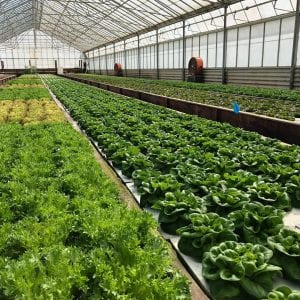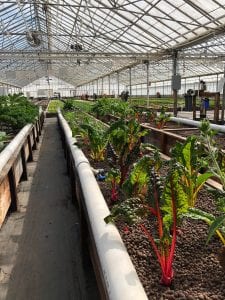Blog #3
Team: Aquaponics/Biogas
Project Updates
Recap: For one portion of our project we are designing an automated system that will transfer the fish waste from the pond, directly to the biogas unit.
After analyzing the current system in place at Middlebrook Gardens we initially thought that a weight sensor would be the best way to determine when the fish waste was at a level high enough to dump. However, upon testing the weight of both water and fish waste mixed with water, we found that there was roughly a 1% difference in weight. We had assumed that there would be a larger difference in density. We are now contemplating whether an optical sensor may work better.
Field Trip!
We had a great field trip to Ouroboros Farms this past Friday (10/5) where we learned a great deal of information from the employees at the farm as well as the owner Mr. Armstrong. It was amazing to see how “happy” the plants looked! The plants that are currently growing in the aquaponic system at Middlebrook Garden are not doing as well so it was nice to see a benchmark for what healthy plants should look like.
Pictures of the “happy” plants at Ouroboros Farms (Top: Swiss chard, Bottom: collard greens)
We were taught all about the aquaponic system, from the different types of fish, to how the seeding process for their plants’ work. It was also interesting to discover that there were also small worms and shrimp in the system that aid in process of breaking down the fish waste into more useful compounds for the plants.
The second stage of the seeding process
During our tour, we learned about the three different types of growing methods that can be used for aquaponics, media beds, NFT, and deep culture. Media beds use rocks or perlite where the plants will grow from. NFT, nutrient film technique is where the plants are grown in long narrow channels, sometimes in PVC piping, where a continuous flow of water is pumped over the roots. Deep culture (as shown in the picture to the right)
is where the plants are grown on polystyrene rafts that float on top of the water, this utilizes the space most effectively out of all the methods because so many plants can be grown close together. Mr. Armstrong also informed us of nine essential values that should be measured in an aquaponic system, these include the following: nitrogen, potassium, phosphorus, calcium, iron, magnesium, dissolved oxygen, pH, and temperature.



